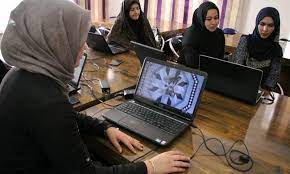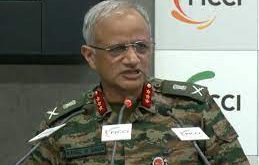London/Islamabad. Imprisoned at home in Herat, Afghanistan, Zainab Muhammadi recalls hanging out with her friends in the cafeteria after a coding class. Now every day she secretly logs on for online classes. His school closed after the Taliban took control of the country in August, but that hasn’t stopped Muhammadi from learning.
Requesting the use of a pseudonym to hide his identity, Muhammadi said, “Danger is the only danger here for girls like me.” If Taliban comes to know… they can give me severe punishment. They can even put me to death.” The 25-year-old student told the Thomson Reuters Foundation over a video call, “But I have not lost hope or my aspirations. I am determined to continue with my studies.
Muhammadi is one of hundreds of Afghan girls and women who are learning – some online and others in hidden temporary classes – despite the Taliban closing their schools. Significantly, during the 1996-2001 regime of the Taliban in Afghanistan, girls and women were denied the right to education and their work and public life were banned.
Code to Inspire – Afghanistan’s first women’s coding academy
Fereshteh Foro, CEO and founder of Code to Inspire (CTI), Afghanistan’s first female coding academy, created an encrypted virtual classroom, uploaded course materials online, and provided laptops and internet packages to nearly 100 of her students, including Muhammadi. He said, ‘You can be locked up at home, but live the virtual world without any hesitation, without worrying about geographical boundaries. That is the beauty of technology.
In September, the Taliban government said that older boys could resume school with all primary age children, but asked older girls between the ages of 12 and 18 to stay at home until they could attend school. Don’t be allowed to come back. The Taliban, which banned girls’ education during its last regime nearly 20 years ago, has promised to let them go to school because it wants to show the world that she has changed.
Taliban working on ‘a roadmap’ for girls’ education will go. Omar Abdi, deputy executive director of the United Nations Children’s Fund (UNICEF), who visited Kabul, told reporters at the UN Headquarters on October 15 that five of Afghanistan’s 34 provinces – Balkh, Jauzjan and Samangan in the north-west, were in the north. Girls are already allowed to attend secondary schools in Kunduz in the east and Urozgan in the southwest.
He said the Taliban’s education minister told him they were working on “a framework” to allow all girls to continue their schooling beyond sixth grade, which was released “between one and two months”. will go.
UNESCO warned in September that there was a threat to access to education, especially for girls and women, after the Taliban took the reins of governance in Afghanistan. A new UNESCO report says that after the Taliban was ousted from power in 2001, the school-going rate of students has increased manifold in the last 20 years. The literacy rate of women in Afghanistan has doubled.
The UNESCO report states that in 2001 there were no girls in primary school, while in 2018 their number increased to 2.5 million. In Afghanistan, the number of girl students in primary schools is now 40 percent. There has also been a huge jump in the number of university goers, which are now in the thousands. About 6% of women were pursuing college education in 2020, up from just 1.8% in 2011.
 Indian Thought Latest News & Views
Indian Thought Latest News & Views


